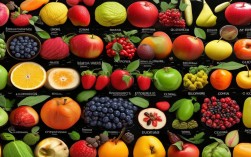Bicycles have been a popular mode of transportation and recreation for centuries. Whether you're a cyclist, a mechanic, or simply an enthusiast, knowing the right English words to describe different parts, types, and functions of bicycles is essential. This guide provides a comprehensive list of terms to help you communicate effectively about bikes.

Basic Bicycle Parts
Understanding the key components of a bicycle is the first step in mastering its vocabulary. Here are the most common parts:
- Frame – The main structure of the bicycle, usually made of steel, aluminum, carbon fiber, or titanium.
- Fork – The part that holds the front wheel and connects to the frame.
- Handlebars – Used for steering, available in different styles like drop bars, flat bars, and riser bars.
- Stem – Connects the handlebars to the fork.
- Saddle (Seat) – Where the rider sits.
- Seatpost – Holds the saddle and adjusts its height.
- Wheels – Consist of rims, spokes, hubs, and tires.
- Tires – The rubber outer layer of the wheel, available in various treads for different terrains.
- Inner Tube – A rubber tube inside the tire that holds air.
- Brakes – Devices used to slow down or stop the bike, including rim brakes, disc brakes, and coaster brakes.
- Pedals – Where the rider places their feet to propel the bike.
- Crankset – The set of crank arms and chainrings that transfer power from the pedals to the chain.
- Chain – Connects the crankset to the rear wheel, transferring pedaling force.
- Cassette – The cluster of gears on the rear wheel.
- Derailleur – Moves the chain between gears (front and rear derailleurs).
Types of Bicycles
Bicycles come in various designs, each suited for different purposes. Here are the most common types:

- Road Bike – Designed for speed on paved roads, featuring lightweight frames and thin tires.
- Mountain Bike (MTB) – Built for off-road trails, with sturdy frames, wide tires, and suspension systems.
- Hybrid Bike – A mix between road and mountain bikes, ideal for commuting and leisure riding.
- City Bike (Commuter Bike) – Designed for urban travel, often with fenders, racks, and comfortable seating.
- Folding Bike – Compact and portable, perfect for commuters with limited storage space.
- Electric Bike (E-Bike) – Equipped with a motor to assist pedaling, making riding easier.
- BMX Bike – Small, durable bikes used for tricks, racing, and stunt riding.
- Touring Bike – Built for long-distance travel, with strong frames and attachment points for luggage.
- Cruiser Bike – Comfortable, stylish bikes with wide seats and upright handlebars, often used for casual riding.
- Recumbent Bike – Features a reclined seating position for ergonomic comfort.
Bicycle Accessories & Gear
Enhancing your ride often involves additional equipment. Here are some common accessories:
- Helmet – Essential for safety, protecting the head in case of falls.
- Lights – Front and rear lights improve visibility in low-light conditions.
- Bell/Horn – Used to alert pedestrians and other cyclists.
- Basket/Panniers – Storage options for carrying items.
- Water Bottle Cage – Holds a drink for hydration during rides.
- Lock – Prevents theft when parking in public places.
- Pump – Inflates tires when pressure is low.
- Repair Kit – Includes patches, tire levers, and a multitool for roadside fixes.
- Cycling Gloves – Provide grip and protect hands from blisters.
- Cycling Shoes – Designed to clip into pedals for efficient power transfer.
Bicycle Actions & Riding Terms
When discussing cycling, certain verbs and phrases are frequently used:

- Pedal – To push the pedals to move the bike.
- Brake – To slow down or stop using the brakes.
- Shift Gears – Changing the resistance level by moving the chain between sprockets.
- Coast – Riding without pedaling, letting momentum carry the bike.
- Stand Up (Out of the Saddle) – Pedaling while standing for extra power.
- Bunny Hop – Lifting both wheels off the ground to jump over obstacles.
- Skid – Sliding the rear wheel by locking the brakes.
- Drafting – Riding closely behind another cyclist to reduce wind resistance.
- Cornering – Turning smoothly while maintaining balance.
- Climbing – Riding uphill, often requiring lower gears.
Maintenance & Repair Terms
Keeping a bike in good condition requires knowledge of maintenance terms:
- Lubricate – Applying oil or grease to moving parts to reduce friction.
- Tighten – Securing bolts and screws to prevent loosening.
- True a Wheel – Adjusting spokes to straighten a bent rim.
- Patch a Tube – Repairing a punctured inner tube instead of replacing it.
- Adjust Derailleurs – Fine-tuning gear shifting for smooth transitions.
- Bleed Brakes – Removing air bubbles from hydraulic brake lines.
- Replace Worn Parts – Swapping out components like brake pads, chains, or tires when they degrade.
- Clean the Drivetrain – Removing dirt and grime from the chain, cassette, and chainrings.
Cycling Culture & Slang
Cycling has its own informal language. Some popular slang terms include:

- Fred – A beginner or overly serious cyclist with mismatched gear.
- Cadence – The speed at which a rider pedals, measured in RPM.
- Bonk – Running out of energy due to lack of nutrition.
- Granny Gear – The easiest, lowest gear for steep climbs.
- Sag Wagon – A support vehicle that picks up riders who can’t finish a ride.
- Hammer – Riding hard and fast.
- Dropped – Being left behind by faster riders.
- Mechanical – A bike malfunction during a ride.
Mastering these terms will improve your ability to discuss bicycles fluently in English. Whether you're shopping for a new bike, performing maintenance, or chatting with fellow cyclists, this vocabulary will prove invaluable. Cycling is more than just riding—it's a language of its own, and knowing the right words enhances the experience.


